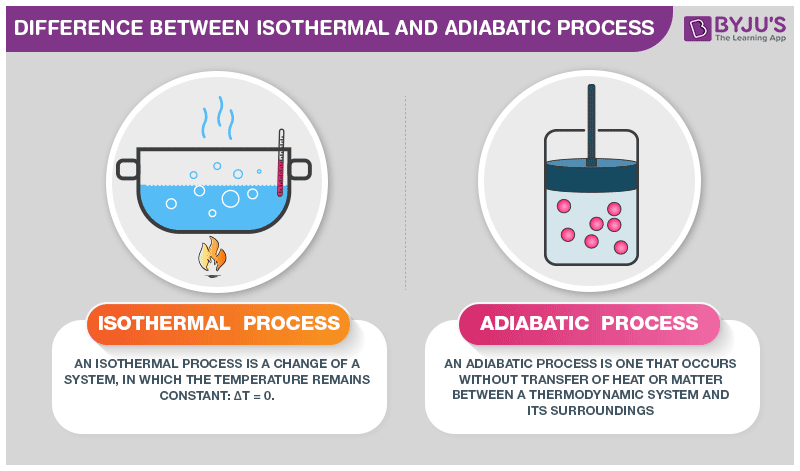The difference between isothermal and adiabatic processes has to be comprehended to understand their industrial applications. Both these processes are more frequently discussed in thermodynamics. Both these processes are entirely opposite to each other.

Difference between Isothermal and Adiabatic process
The major difference between these two types of processes is that in the adiabatic process, there is no transfer of heat towards or from the liquid. On the other hand, in the isothermal process, there is a transfer of heat to the surroundings to make the overall temperature constant.
| Difference between Isothermal and Adiabatic process | |
|---|---|
| Isothermal | Adiabatic |
| Transfer of heat occurs. | No transfer of heat occurs. |
| The pressure is more at a given volume. | The pressure is less at a given volume. |
| The temperature remains constant. | The temperature changes due to internal system variations. |
| Heat can be added or released to the system just to keep the same temperature. | There is no addition of heat, nor is heat released because maintaining constant temperature doesn’t matter here. |
| The transformation is slow. | The transformation is fast. |
These are some differences between the isothermal and adiabatic processes. If you wish to find out more, download BYJU’S – The Learning App.
RELATED ARTICLES:
| Thermodynamic process & types | Adiabatic process |

how adiabatic process can be possible without charge of temperature as we know when Heat Energy transfers from hot body to cold body there must be a temperature change unless the process occurs at phase change so is a diabetic process occurs at phase chang?